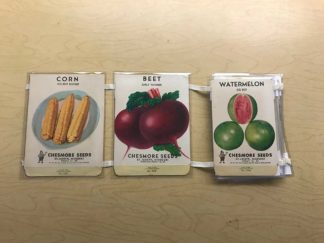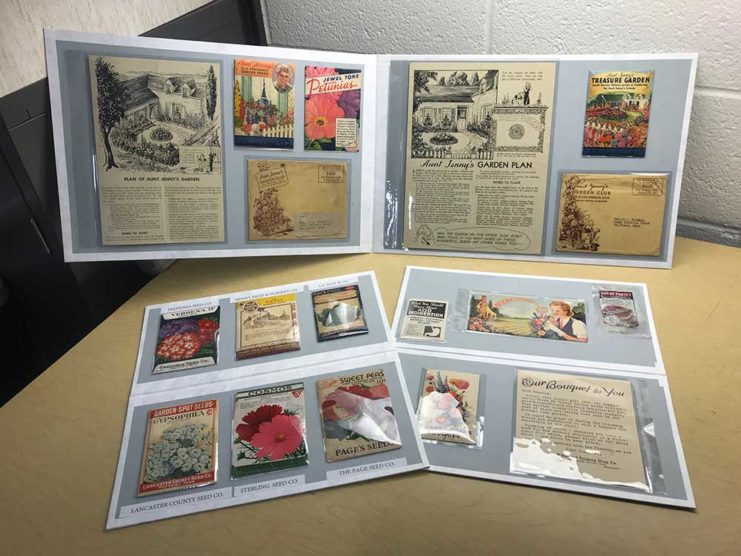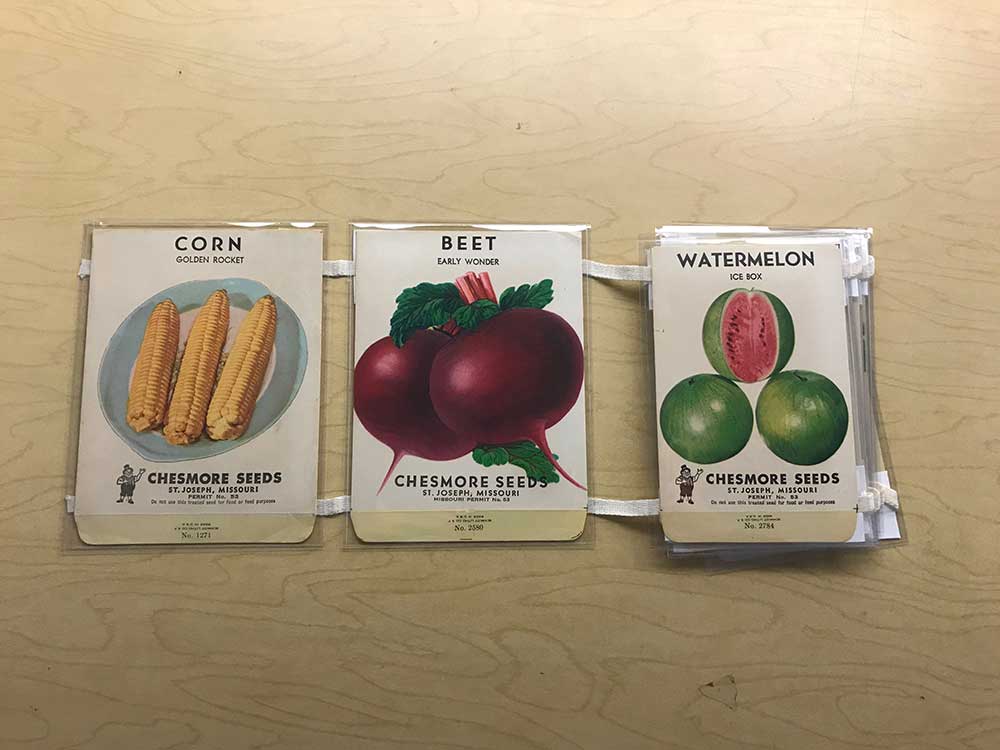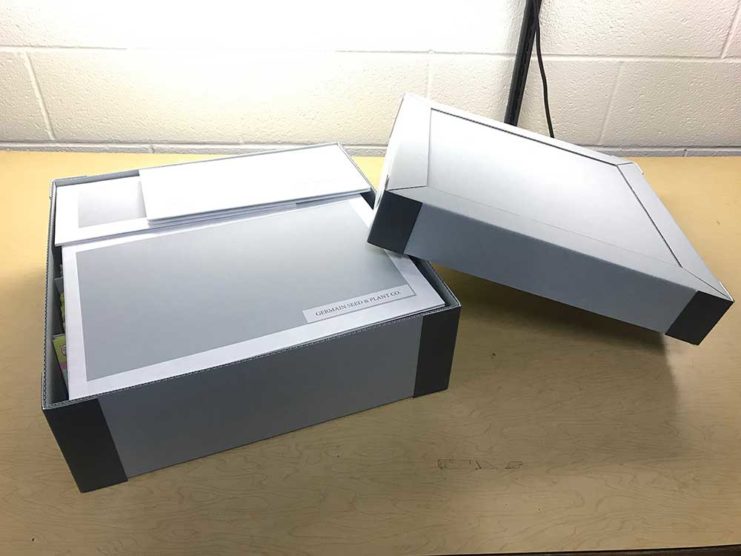By Laurie Jedamus
 Preservation staff at the University of Minnesota Libraries often create custom enclosures to safely store and protect archival materials. But sometimes these enclosures can rise above the level of the merely practical and become extraordinary showcases for the materials they house.
Preservation staff at the University of Minnesota Libraries often create custom enclosures to safely store and protect archival materials. But sometimes these enclosures can rise above the level of the merely practical and become extraordinary showcases for the materials they house.
That is the case for a set of custom enclosures that Breanna Tyrrel recently designed for the Andersen Horticultural Library (AHL).
This story begins with a pile of seed packets of varying sizes, complete with colorful artwork, still containing the seeds that they’ve held for decades. No one is sure exactly when AHL acquired them, but they’ve been part of the Andersen Horticultural Library’s collection for decades.
While the seed packets are stored securely in AHL’s climate-controlled rare collections room, previously they were organized in pretty much the same way they’d arrived at the library: in plastic and paper bags or loose and piled on a shelf — all in no particular order, which made it difficult for AHL staff and researchers to use the collection.
Kathy Allen, AHL’s curator, asked the Libraries’ Collection Management and Preservation department (CMP) to design and construct custom storage for the seed packets. Breanna Tyrrel, a CMP staff member and enclosure wizard/ace/virtuoso, was more than up to the challenge.
As always, Breanna began with a conversation with the curator. Since she had designed enclosures for the Horticultural Library before, Kathy gave her some background on the collection and how it would likely be used, then left the details up to Breanna’s judgment and design skills.
“With regard to the Historic Seed and Nursery Catalog Collection (of which the seed packets are a part), we think in terms of 500 years, or more,” Kathy said, in regard to background and usage. “Looking through that long lens we can imagine that the way seeds were packaged, the varieties available at that time and from that company, the price, recommended planting date, as well as the artwork, if any, might be of interest.
“In this case, the intended users would be researchers exploring particular companies or graphic depictions of plants. In addition, they will be most heavily used by library staff in engaging the public with these tactile and memorable objects.”
Her requirements for the enclosures?
“We gave CMP a lot of leeway, specifying only that we wanted to preserve the items in the best way possible (in their judgment), while still allowing easy access for researchers and library staff.”
Here is where the creativity begins.
Custom box
What would be the best way to house the seed packets, protecting them but also offering easy access? Since most still contain seeds, some packets were quite bulky, and several were different sizes. Breanna decided to create a custom archival storage box for the majority of the items. She measured each packet and created a 16-slot divider that would fit the largest of the seed packets. Since they might be used for research on seed companies, she also sorted them by company.
This enclosure accomplished many of Breanna’s goals. Staff or researchers can flip through the packets in each compartment, selecting particular ones for display or research without removing or unwrapping them, minimizing wear and tear. It’s also adaptable — because she left several extra dividers, AHL staff can continue to add seeds from different companies or have more options for arranging them
Display portfolio
A few single seed packets were left over. And as is so often the case, the collection also included, well, more than seed packets. There were a few larger items that had been distributed with the seeds. How to display these? They were way too big to fit into the compartments in the big box, and they could tell their story better if they were kept with the seed packets they came with.
For these, Breanna designed a custom portfolio and two display boards with Mylar pockets to hold, protect, and display everything together. They will also be easy to use for education and display.
Inspired by platebooks
Finally, inspired by the unique structures of AHL’s collection of nurserymen’s platebooks (you can page through an example here), a few of the seed packets were encapsulated in Mylar and linked together with cloth tape. This makes for an engaging and tactile display, while still protecting the artifacts.
For safety and convenience, the portfolio, display boards, and platebook-inspired display all fit neatly into the big box. As is true of all the enclosures CMP builds, all the enclosures are archival and can be disassembled without harming the contents.
The curator’s reaction?
“Having [the seed packets] well-organized will make it much easier to analyze the collection and be able to pull individual items to include in displays or talks,” Kathy says. “What I wasn’t looking for — it wasn’t even on my radar — was beauty. We wanted a practical way to store and organize multiple miscellaneous items. When I saw the finished product — the practical yet beautifully designed enclosures — my first thought was, ‘We need to create an exhibit solely to showcase these wonderful enclosures!’”







